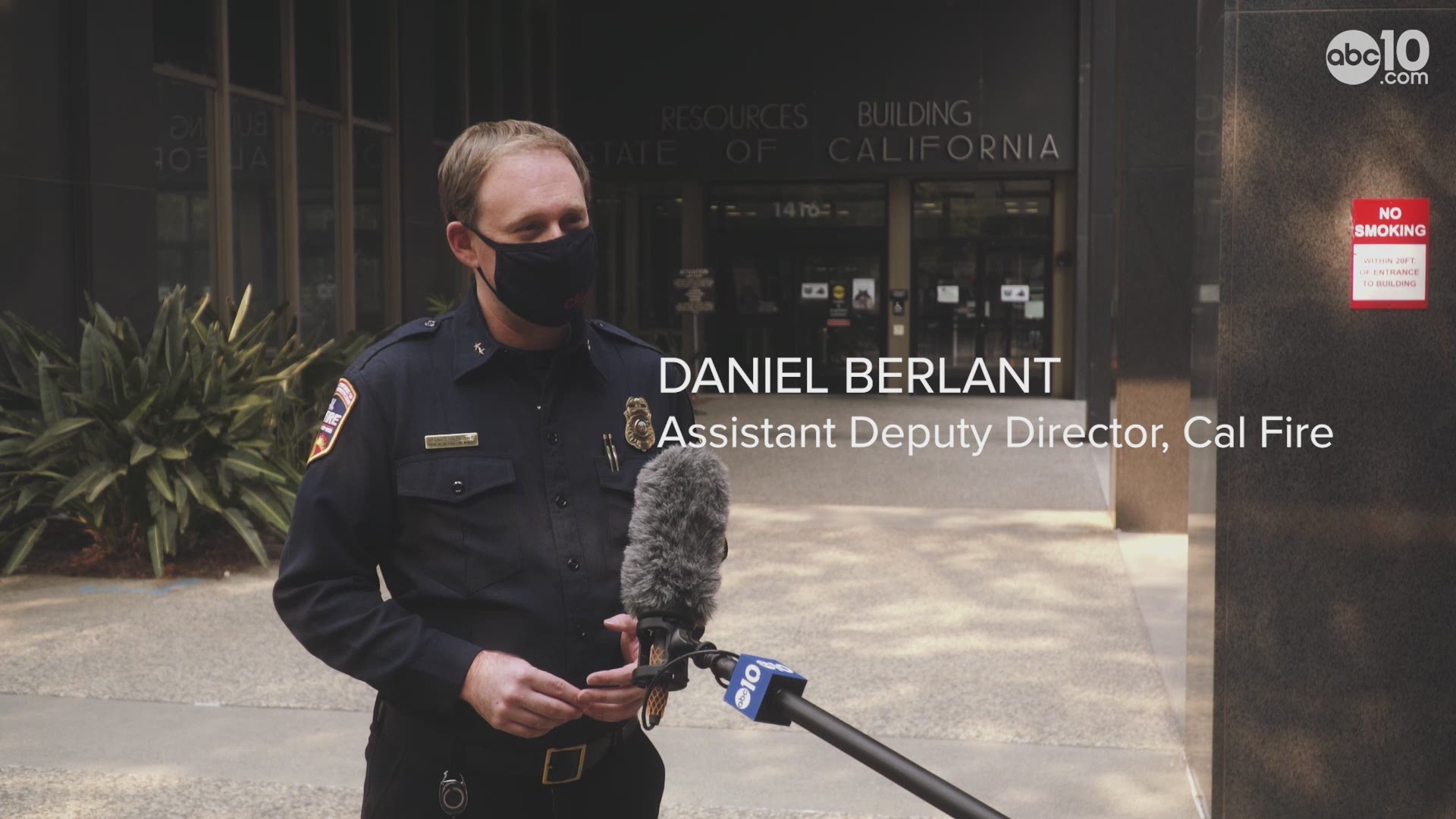CALIFORNIA, USA — In a year where California has seen millions of acres burn, thousands of firefighters have answered the call to stare down and douse some of the largest blazes in state history.
Cal Fire said 14,000 firefighters are battling 29 major fires across California, three of which have become the state’s largest. While the wildfire mutual aid system is tried and true, it might be going through the test of a lifetime right now.
“Mother Nature has not been our friend this year,” said State Fire and Rescue Chief Brian Marshall with the California Office of Emergency Services (OES). “There’s so many fires across the state, both north and south and Central California - and when this happens, there’s only so many resources to go around.”
With the mutual aid system, an incident commander calls on local fire departments to lend a hand in battling an incident like a wildfire. If the situation calls for it, OES could use the Emergency Management Assistance Compact (EMAC) to call on other states for mutual aid, but, right now, there are places other than California that need help too.
“As we went through the last month of these fires, the Gulf Coast had a hurricane. That limited some of the states that normally help us to send resources," Marshall said. "What we’re faced with today is Oregon is suffering devastating wildfires, so resources are coming to California and also going to Oregon - so more fires, more devastation. More resources are needed, and there’s only so many to go around.”
Nonetheless, resources have still come from across the state and also from Texas, New Mexico, and Idaho.
Lisa Cox, a US Forest Service spokesperson for the North Complex fires, said resources have come from all over the country and Canada to lend aid.
She said at least half of the 50 states are contributing state employees along with resources from a number of counties and cities. Resources are coming all the way from New York down to Florida, south to Mississippi, up to Alaska, and Quebec, Canada to fight the North Complex fires.
While resources are strained and the system has a breaking point, it is still in good shape for now, Marshall said. The mutual aid system has been serving them well since the 1970s when it was built.
The system was a concept that his predecessor Chief Kim Zagaris described in 2018 as being all about “neighbor helping neighbor,” and one that grew due to a disaster-prone California and years of experience.
“Unfortunately, here in California, it’s sometimes referred to as the 'Disneyland of Disaster'- one of the most disaster-prone states in the nation, if not the world sometimes. We, unfortunately, get the exercise,” Zagaris told ABC10 in 2018.
This year, fire crews have battled a siege of lightning-sparked wildfires, which include the LNU Lightning Complex, SCU Lightning Complex, and the August Complex. This year won’t go unnoticed. Marshall said officials will be looking at how they responded, how the system can be improved, and how resources can be moved faster.
Even though the mutual aid system can be challenged by the number of fires across the state, their size, and the travel time for an agency to respond, the saying at OES is that 'nobody stands alone.'
"California firefighters are some of the most highly trained firefighters in the nation," Marshall said. "The citizens of California can feel safe that their firefighters are ready to answer the call for help.”
“The system’s been refined. It’s been improved, and it is the best system in the world,” he added.
For a list of local fire departments currently fighting the California wildfires, view the Cal Fire list below:
WATCH ALSO:

